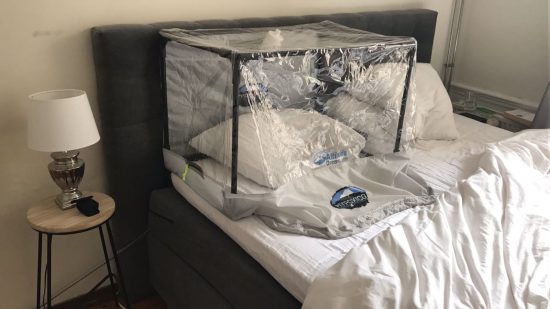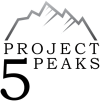
I live in Rotterdam below sea level. The highest 'mountain' in the area is the 37 m high Vlaggeduin. The closest mountains are a 10-hour drive from Rotterdam. The Netherlands is the perfect country to live as an alpinist ... Not. Fortunately nowadays it is also possible to acclimatize at home to the altitude.
In addition to that specific training in the mountains would be the best preparation for our expedition, it is necessary that we are thoroughly acclimatized for this expedition before we arrive. We fly by helicopter to the base camp at an altitude of 4000m. It also helps to minimize the time we have to spend on the mountain with additional dangers and reduces the chance of it altitude sickness.
Since we have no mountains nearby to acclimatize, we are experimenting with 'hypoxic pre-conditioning' this year. That means training and sleeping in one altitude tent with a reduced oxygen level to get our bodies used to the oxygen deficiency on Khan Tengri and Pobeda. At the peak of Peak Pobeda there is only 38% of the amount of oxygen in the air compared to sea level.
How does acclimatization work at home?
AltitudeDream.com has installed special height tents above our beds that are connected to a mobile altitude generator which can regulate the amount of oxygen in the air that is blown into the tent. With this you can simulate oxygen values up to 6,400m. I sleep in a queen-size tent that fits a normal bed. Gijs only sleeps with his head in a box, because his girlfriend had little interest in sharing this acclimatization pleasure with him.
The generator can also be connected to a mask that you can use while sitting behind the TV or computer, passive acclimatization. We also use the mask to actively acclimatize while doing interval training on a bicycle. This is an incredibly intensive (but hopefully effective) acclimatization method that is also used by professional athletes.
We have been sleeping in these height tents for three weeks and are currently sleeping at an altitude of 4,000m (compare 60% oxygen with sea level). Every morning when we wake up we check the oxygen level in our blood. Normally this is 100%, but during acclimatization we aim to wake up every morning with levels between 90% and 92%. If you have a higher value in the morning, you can sleep 'higher' the next night. If you wake up with a lower percentage than 90%, it will have a negative effect on your training and fitness, which is also not handy.
My first nights in this tent were not fantastic. I woke up tired than usual. Just like when you sleep at new heights in the mountains! I am now used to it.
Now the question is whether this will help us on our expedition. Of course, we will only know that when we are there and can tell more about it afterwards. Last weekend, we were in the Alps and went from sea level to 3,800m in one day without too many problems. That was a good sign in any case! In our next blog, we will report on the effects we experienced after the period in the altitude tent.
Allert Bosch & Gijs Schuurmans - Project 5 Peaks


